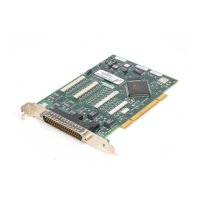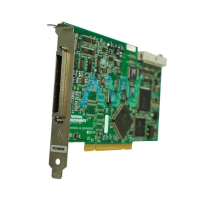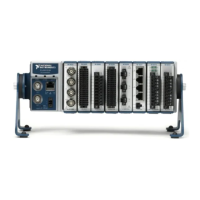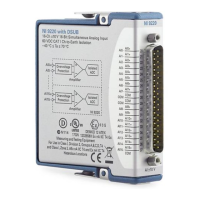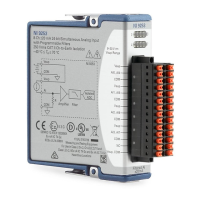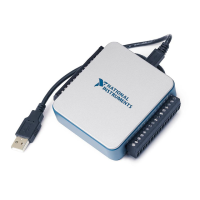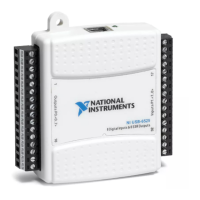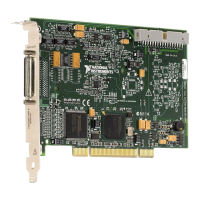© National Instruments | 11-5
M Series User Manual
– Analog Edge Trigger with Hysteresis (Falling Slope)—When using hysteresis with a
falling slope, you specify a trigger level and amount of hysteresis. The low threshold
is the trigger level; the high threshold is the trigger level plus the hysteresis.
For the trigger to assert, the signal must first be above the high threshold, then go
below the low threshold. The trigger stays asserted until the signal returns above the
high threshold. The output of the trigger detection circuitry is the internal Analog
Comparison Event signal, as shown in Figure 11-6.
Figure 11-6. Analog Edge Triggering with Hysteresis Falling Slope Example
• Analog Window Triggering—An analog window trigger occurs when an analog signal
either passes into (enters) or passes out of (leaves) a window defined by two voltage levels.
Specify the levels by setting the window Top value and the window Bottom value.
Figure 11-7 demonstrates a trigger that asserts when the signal enters the window.
Figure 11-7. Analog Window Triggering Mode (Entering Window)
Analog Comparison Event
Hysteresis
High threshold
(Level + Hysteresis)
Low threshold
(Level)
First signal must go
above high threshold.
Then signal must go below low threshold
before Analog Comparison Event asserts.
To p
Analog Comparison Event
Bottom
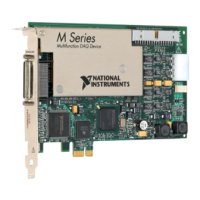
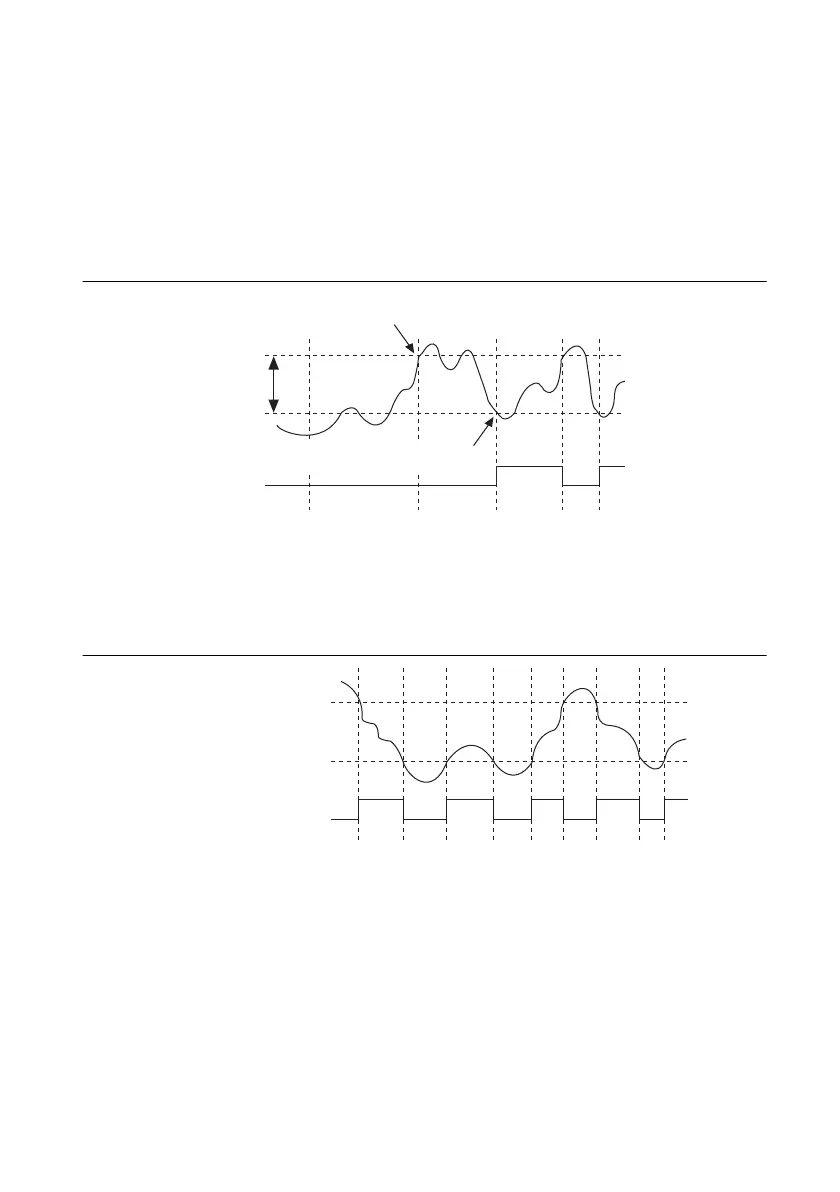